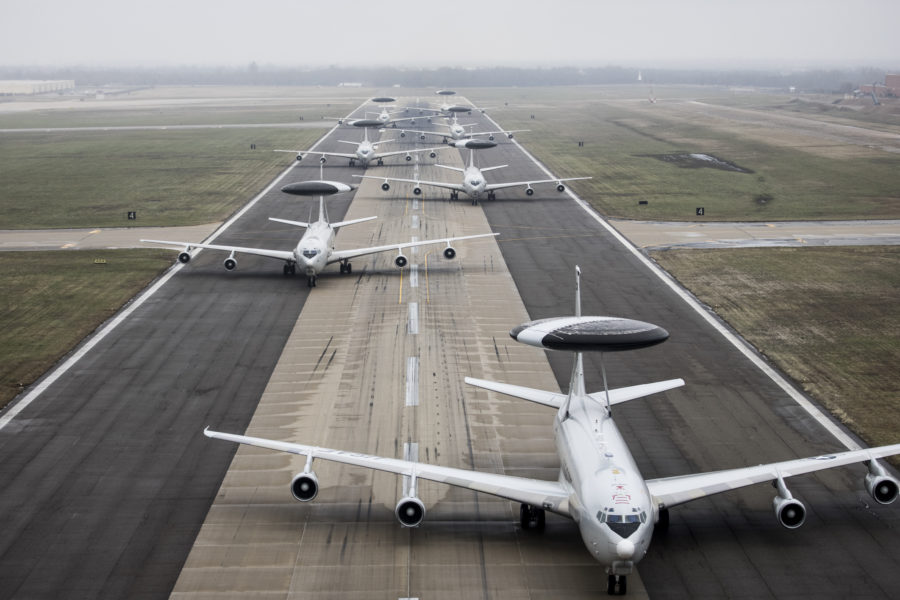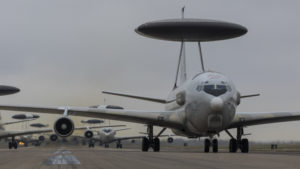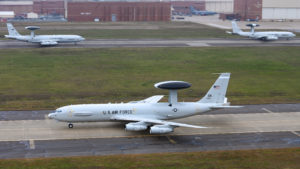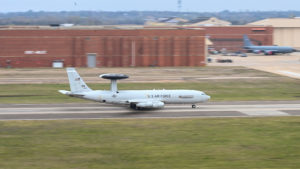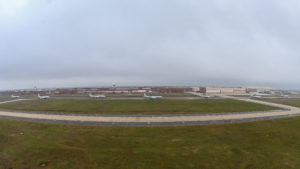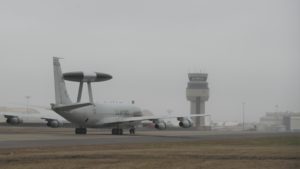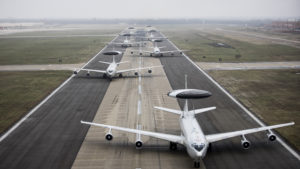More than a dozen E-3 Sentry airborne warning and control, or AWACS, aircraft lined up on the runways at Tinker Air Force Base, Okla., on March 21. The crews of the distinctive E-3, with rotating radar domes perched above the fuselage, were practicing one of their more perilous missions: the weather flush.
“The weather flush gives aircrews, support squadrons, and maintainers a chance to practice generating the E-3G Sentry to evacuate the area quickly in the event of a weather emergency,” a Tinker Air Force Base release said of the exercise.
Before severe weather hits, Air Force bases across the U.S. often fly their planes of harm’s way. Usually, evacuations occur because of a hurricane or a similar large, predictable weather event. Some bases, however, are subject to unpredictable weather and have aircraft that cannot easily be replaced—Tinker Air Force Base is in the heart of tornado alley in central Oklahoma and houses most of the Air Force’s AWACS fleet.
“Weather flush exercises are somewhat unique in that we are usually focusing on maximizing aircraft generation and updating airfield dispersal plans in a very rapid timeline,” an official from the 552nd Air Control Wing told Air & Space Forces Magazine.
Tinker is the only base in the continental U.S. with E-3s, and the majority of the Air Force’s fleet of the aircraft—27 of 31—are assigned there. E-3 aircraft are needed for battle management and command control missions, so they could not all participate in the weather flush exercise, the official said. However, 552nd Air Control Wing said they tried to make the exercise as realistic as possible.
“For this exercise, no jet was off limits,” the wing official said. “There were other mission requirements that constrained being able to walk all of our available aircraft so for this exercise, 14 were rapidly generated.”
The 552nd Air Control Wing is well aware of its unique location and aircraft, the official noted, and has weather forecasters that give the base around 48 hours notice on whether or not they should fly their aircraft out of harm’s way or protect them in their hangers.
In the weather flush mission, five aircraft departed Tinker, though the exercise simulated scrambling aircrews and ground personnel for the additional planes.
The E-3s are an aging part of the Air Force’s command and control fleet, and the Air Force plans to replace the aircraft with the E-7 Wedgetail as soon as possible. E-3s in the fleet have an average age of over 40 years and a mission capable rate of around 60 percent.
With the aircraft’s retirement looming, the 552nd Air Control Wing took the exercise as opportunity to stage an elephant walk—aircraft taxiing in a close formation in a show of airpower—on one of the base’s runways.
“For this one, and to preserve a little history, the aircraft weren’t allowed to take off immediately when they were ready, we held them so we could capture the elephant walk picture, then we flew some of them off station and dispersed others,” the 552nd Air Control Wing official said.
